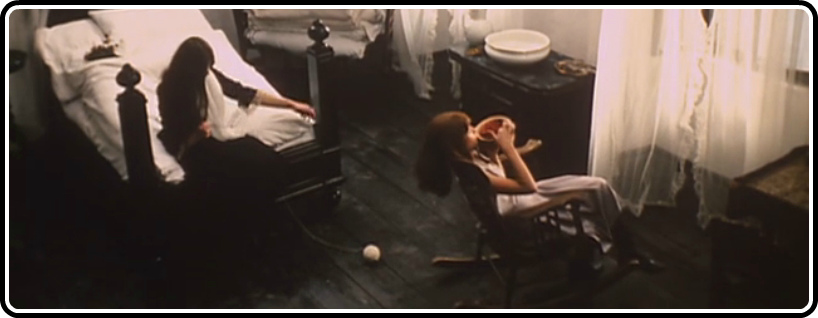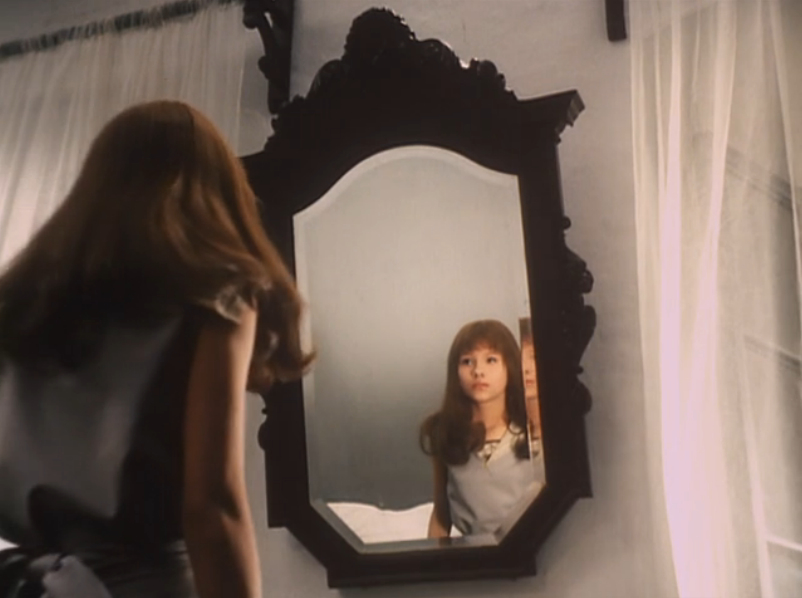
I’ve been on quite the Czech New Wave kick as of late having just plowed through Criterion’s formidable (and wholly awesome) Pearls of the Czech New Wave set. And with the Silent Movie Theater here in Los Angeles doing a whole festival of Czech films, including the one we’re discussing today, I figured the atmosphere is just right to consider Valerie and Her Week of Wonders.
When Criterion first added this to their Hulu channel, I joked that the listed premise, which included the phrase “on the cusp of womanhood,” sounded a little Rochelle, Rochelle-esque, and while I wouldn’t say that’s wholly untrue – director Jaromil JireÅ¡ is not the least shy about the sexual overtones of the film – it’s not quite as exploitative as my aside makes it out to be. Not quite.
Jaroslava Schallerová plays Valerie, who moves through time, space, and consciousness in exploring her very recent onset of puberty. JireÅ¡ pulls out all the realistic stops to plant us firmly in her point-of-view, depicting womanhood as though the blinders have suddenly come off, and Valerie can now see the world not as it is, but as a child might interpret the world as it is. She’s almost immediately the target of sexual predators and explorers, and she firmly rebukes the former while expressing curiosity and wonder towards the latter. This dual nature of sexuality in its early stages, a simultaneous fascination and repulsion, is wonderfully represented. Some people appear quite literally as monsters, frequently vampires, and some environments seem ripped from the Universal monster movies. Others are almost heavenly; glowing white, warm and receptive. In some scenes she’s chained to a bed or burned at the stake (this being something of a dreamscape, people frequently die and are reincarnated with no explanation), usually punished as a seductress by those who had little success in seducing her.

Schallerová is a quite winning lead, at ease with the camera in a way few young actors are, taking every surreal adventure as it comes, as though there was nothing more natural in the world. She perfectly toes the line between a child’s innocence and naiveté and the oncoming petulance of the teenage years. Valerie lives with her overbearing grandmother, portrayed with bleached-white skin that makes her look like the living dead, and there’s an undercurrent in the film of Valerie learning to deal with adults as equals while still acknowledging certain authoritative limits. This was Schallerová’s first film, and she’d justly go on to have a successful, if short-lived, career in Czech cinema.
This is unusual territory for what I’ve come to expect from JireÅ¡, whose films in the Eclipse set (one feature and one short) trend much more towards serious material, driven by politics and influenced by Antonioni, Bergman, and the less playful side of Godard. Valerie takes the tone of a fairy tale by way of a more realistic coming-of-age story. Even though it’s adapted from a Czech novel, it could take place almost anywhere, and doesn’t have the same urgency present in the films of the Eclipse set. It only fits in with the Czech New Wave insofar as it tackles a subject that the powers than be in any country would be loathe to discuss, and it’s more than a little confrontational about it as well. JireÅ¡ explores Valerie in a way that is a little bit fawning, and not at all shy about turning the themes of sexuality directly onto her. Sometimes it’s in a way that glorifies her; other times, he uses her sexuality as vulnerability. Neither are very comfortable to watch over forty years later, but hey, maybe that’s the point. A young person, and particularly a young woman’s, sexual coming-of-age difficult territory to tread cinematically without coming across as, well, a little untoward. It’s subject worth exploring, but given the very real, live nature of filmmaking, I wonder if perhaps JireÅ¡ could have accomplished the same result with more restraint.
The chief pleasures are certainly of the aesthetic variety. Color film stock in Eastern Europe at the time was not what one might call the finest quality, but a few directors in a few films managed to really put it to good use. Its blown-out look and muted colors fit very well with the fairy tale dreamscape that JireÅ¡ employs, one which calls to mind in the modern viewer what Tim Burton might have been aiming for with Alice in Wonderland if he hadn’t have failed so miserably. It’s a fairy tale land that is not quite as magical as it may once have been, one that’s been tread over many times in many retellings, and it feels tired in the way the stories themselves would to someone exiting childhood, but with the faint familiarity of their once-grand appeal. Criterion’s presentation on their Hulu channel is, even in good, old-fashioned standard definition, quite lovely. It retains the feeling of film, if not necessarily the exact characteristics. Still, it’s clear enough – again, the blown-out nature of the stock makes it a trifle soft at times – and absent any proper release, I was quite pleased with it.
I don’t know if Criterion has major plans for their Czech holdings going forward; I suspect much of it hinges on how well the Eclipse set, which I cannot recommend highly enough, sells. Perhaps we could get a follow-up set that includes this and some other as-of-yet-uncovered gems?
Get 2 weeks free when you sign up for a Hulu Plus account!


